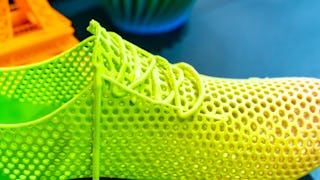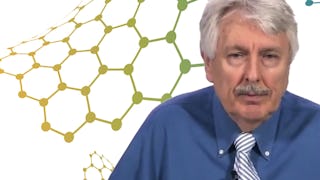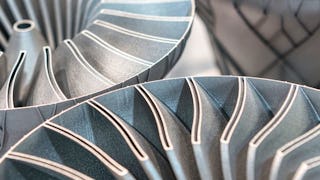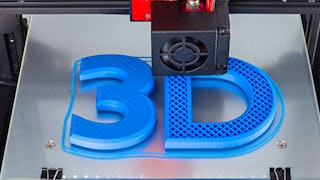This course is a deep dive into the most commonly used method of additive manufacturing: material extrusion. We specifically examine the fused deposition modeling process, and then look at the related composite extrusion process which can extrude a continuous fiber (such as carbon fiber) along with a thermoplastic.


您将学到什么
Students will identify the two ways in which to 3D print using the material extrusion process.
您将获得的技能
要了解的详细信息

添加到您的领英档案
4 项作业
了解顶级公司的员工如何掌握热门技能

积累特定领域的专业知识
- 向行业专家学习新概念
- 获得对主题或工具的基础理解
- 通过实践项目培养工作相关技能
- 获得可共享的职业证书

该课程共有4个模块
This course is a deep dive into the most commonly used method of additive manufacturing: material extrusion. We specifically examine the fused deposition modeling process, and then look at the related composite extrusion process which can extrude a continuous fiber (such as carbon fiber) along with a thermoplastic. The necessary elements for each course are lecture videos, knowledge checks, and project completion. For additional information on certain topics, I've included supplemental readings and videos throughout various lessons that might enhance your knowledge. Because all resources are not available to all students, these materials are optional. In addition, you will note that some of the lectures feature our department’s graduate students. These excellent students are sometimes closer to the material, having learned it recently, so we greatly appreciate their participation in the instructional process.
涵盖的内容
1个视频1篇阅读材料
This module introduces you to fused deposition modeling.
涵盖的内容
4个视频2篇阅读材料1个作业
This module introduces you to composite extrusion. We will be working with Markforged equipment, but some of the concepts of embedding continuous fibers are relevant for other composite extrusion machines as well.
涵盖的内容
4个视频1篇阅读材料1个作业
A key difference in most additive manufacturing processes from their traditional counterparts is that they tend to have rougher surfaces. Further, the roughness of 3D printed surfaces can be dependent on the print orientation. In this module you will analyze data obtained from an experiment to characterize surface roughness from fused deposition modeling surfaces at different orientations.
涵盖的内容
4个视频2篇阅读材料2个作业
获得职业证书
将此证书添加到您的 LinkedIn 个人资料、简历或履历中。在社交媒体和绩效考核中分享。
位教师

从 Mechanical Engineering 浏览更多内容
 状态:免费试用
状态:免费试用Arizona State University
 状态:预览
状态:预览Georgia Institute of Technology
 状态:免费试用
状态:免费试用Arizona State University
 状态:免费试用
状态:免费试用University of Michigan
人们为什么选择 Coursera 来帮助自己实现职业发展




常见问题
To access the course materials, assignments and to earn a Certificate, you will need to purchase the Certificate experience when you enroll in a course. You can try a Free Trial instead, or apply for Financial Aid. The course may offer 'Full Course, No Certificate' instead. This option lets you see all course materials, submit required assessments, and get a final grade. This also means that you will not be able to purchase a Certificate experience.
When you enroll in the course, you get access to all of the courses in the Specialization, and you earn a certificate when you complete the work. Your electronic Certificate will be added to your Accomplishments page - from there, you can print your Certificate or add it to your LinkedIn profile.
Yes. In select learning programs, you can apply for financial aid or a scholarship if you can’t afford the enrollment fee. If fin aid or scholarship is available for your learning program selection, you’ll find a link to apply on the description page.
更多问题
提供助学金,

 中
中

